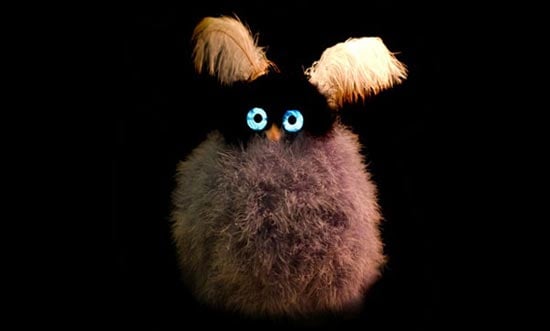Check out this fun robot called Tofu, who is named after the squashing and stretching food product.
TOFU is a project to explore new ways of robotic social expression by leveraging techniques that have been used in 2D animation for decades. Disney Animation Studios pioneered animation tools such as “squash and stretch” and “secondary motion” in the 50’s. Such techniques have since been used widely by animators, but are not commonly used to design robots. TOFU, who is named after the squashing and stretching food product, can also squash and stretch. Clever use of compliant materials and elastic coupling, provide an actuation method that is vibrant yet robust. Instead of using eyes actuated by motors, TOFU uses inexpensive OLED displays, which offer highly dynamic and lifelike motion.
The Inspiration Behind Tofu
The inspiration behind Tofu comes from the rich history of animation. In the 1950s, Disney Animation Studios revolutionized the field with techniques like “squash and stretch” and “secondary motion.” These methods brought characters to life, making them more expressive and relatable. Tofu aims to bring these same principles to robotics, creating a robot that can convey emotions and reactions in a more lifelike manner. The use of compliant materials and elastic coupling allows Tofu to move in ways that are both dynamic and resilient, mimicking the fluidity of animated characters.
Innovative Design and Technology
One of the standout features of Tofu is its use of OLED displays for eyes. Traditional robots often rely on mechanical eyes actuated by motors, which can be complex and expensive. Tofu’s OLED eyes are not only cost-effective but also offer a wide range of expressive possibilities. These displays can change shape, size, and color rapidly, allowing Tofu to convey a variety of emotions and reactions. This makes Tofu not just a functional robot, but a social one, capable of engaging with humans on a more emotional level.
Here’s a video of Tofu in action.
Tofu via Bot Junkie
Tofu’s design also incorporates secondary motion, another technique borrowed from animation. Secondary motion refers to the natural, secondary movements that occur as a result of a primary action. For example, when Tofu moves its head, there might be a slight delay in the movement of its ears or other appendages, adding to the realism of its actions. This attention to detail makes Tofu a fascinating example of how principles from one field can be successfully applied to another.
Moreover, Tofu’s ability to squash and stretch is not just for show; it serves a functional purpose. These movements can help Tofu navigate its environment more effectively, absorbing impacts and adapting to different surfaces. This makes Tofu not just an expressive robot, but a versatile one, capable of performing a variety of tasks.
In summary, Tofu is a groundbreaking project that brings together the worlds of animation and robotics. By leveraging techniques like squash and stretch, secondary motion, and innovative use of OLED displays, Tofu offers a new way to think about robotic design and social interaction. Whether you’re a fan of animation, robotics, or both, Tofu is sure to capture your imagination.
Latest Geeky Gadgets Deals
Disclosure: Some of our articles include affiliate links. If you buy something through one of these links, Geeky Gadgets may earn an affiliate commission. Learn about our Disclosure Policy.
